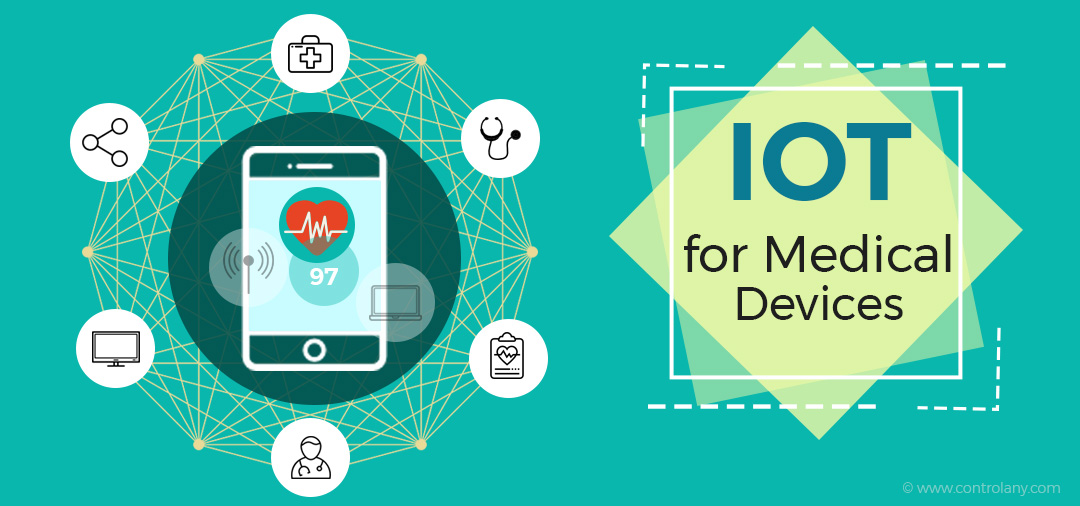

As a consumer, you are probably already dreaming about the ways that Internet of Things applications can improve your personal life
From ovens that cook food automatically to a coffee maker that starts brewing as soon as your alarm goes off to an entire smart home.
However, there is another industry that could see an even bigger benefit from this emerging technology that you might not have even considered…
Have you thought about how IoT applications could eventually improve your health and overall lifestyle?
While IoT medical devices might sound like a think of the future pulled straight from the time machine itself, this area has actually been around longer than the term IoT has even existed. With regular home-based IoT still waiting to take off, IoT medical devices still clearly have a long way to go, although the future might just come sooner than you think.
When it comes to Internet of Things in the medical and healthcare industries, the best is yet to come:
Have you ever considered how difficult it can be to treat something based on the outside appearance it has?
Think of how vital x-rays and CT scans are in locating an issue and treating it – because a look inside the body is needed.
While current technology, such as CT scans and MRI’s have greatly advanced, there are still some areas where internal problems are lingering but are not discovered or cannot be properly addressed…
But, this could change –
Smart pills would contain thousands of nanobots and could be ingested by the patient. This medical advancement would allow doctors to monitor the patients from the inside by virtually streaming how their bodies are performing.
One of the most important aspects of someone surviving an accident or injury is how long it takes the emergency response team to arrive at the scene.
A few minutes or even just a few seconds could stand between the victim living or dying.
The future of IoT in the medical field could provide emergency response teams with the ability to communicate directly with traffic lights – automatically clearing their path – and other advancements that would improve their response time.
Losing a limb or having one impaired for a period of time is a pain already… Literally.
But the process of getting a cast or a prosthetic can be just as long and grueling as the injury itself.
But, with the future of IoT in medical devices, there is the potential that these types of medical devices could instantly adapt to the person once put on to ensure an instantly perfect fit.
But, wait, it gets better…
The prosthetic limb could even then be controlled by human thought, giving it a more natural feel for the patient and possibly restoring more and better movement than today’s prosthetic limbs.
Bio-hacking still remains a controversial issue over the ethics and morals regarding the topic.
However, there are instances where it could be used to save a life.
Similar to how pets can be implanted with RFID chips to allow their owners to locate them, similar chips could be used for identification purposes.
You’ve probably taken your blood pressure at some point.
In fact, if you have had issues before or were instructed by your doctor, you probably take it quite often.
But, what if you had a device that could constantly monitor it for you?
For some people, their vitals fluctuate so much or are so on edge that constant monitoring could be a necessary step in saving their lives.
Wearable devices and online technology improved by IoT could allow a patient’s vitals to be monitored from a great distance and allow the physician to be notified if those vitals change.
Autonomous cars are already plaguing the news as several companies race to develop the best fully autonomous car…
But, what if this was applied to healthcare vehicles?
If emergency response vehicles became fully autonomous, they could allow the emergency response team to have everyone on board – fully treating the patient until they arrive at the hospital.
Hospitals have already greatly improved both for comfort care and for practicality…
With the simple touch of a button, you can have a nurse at your bedside in no time.
But, with the advancement of IoT in medical devices, hospitals could offer much more advanced devices…
Such as a smart bed that can detect when a bed is occupied and when a patient is trying to get up.
This would help doctors and nurses keep track of patients and increase patient safety.
Similar to how bio-hacking could be used for identification purposes in the event of an accident, it could also be used to track patient’s habits…
While this might sound a bit invasive, doesn’t it make sense to prevent an illness or injury rather than just treat it when it happens? If you have that option, of course.
Bio-hacking could allow doctors to monitor each individual’s habits and suggest changes or treatment to prevent other issues and provide better healthcare services.
The idea that most of the things we do on our own could actually be done automatically for us makes the idea of a seemingly perfect life not seem so far-fetched.
But, IoT could be used for even something far greater than leisurely things – it could be used to improve your health and lifestyle.
With cancer and various other diseases and illnesses playing a major role in our lives, any preventative measure that can be taken and improved is a step toward furthering the human lifespan.
Sign up for our latest blog posts and we’ll keep you updated. Oh, and we don’t spam.